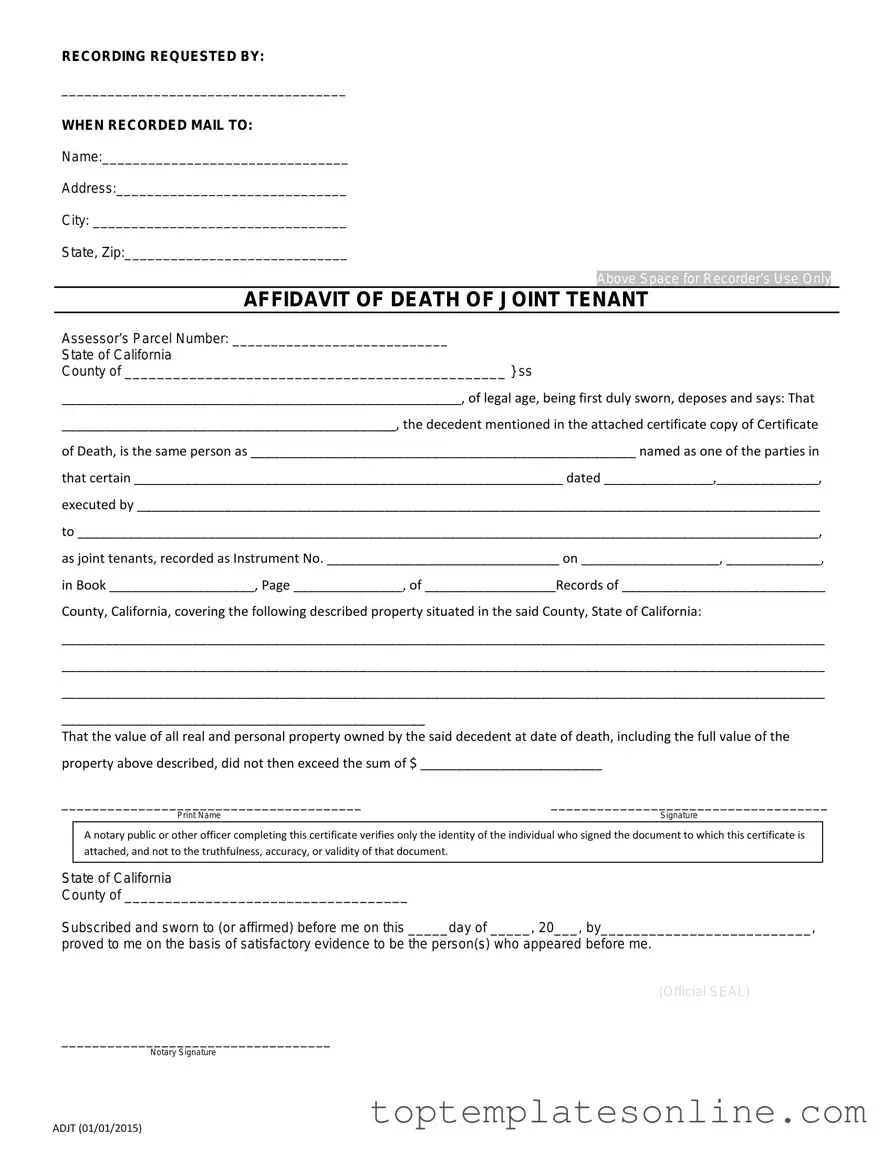Fillable California Death of a Joint Tenant Affidavit Form
The California Death of a Joint Tenant Affidavit form is a legal document used to establish the death of one joint tenant in a property ownership arrangement. This affidavit allows the surviving joint tenant to claim full ownership of the property without going through probate. Understanding how to properly complete and file this form is essential for ensuring a smooth transition of property rights after a joint tenant passes away.
Customize California Death of a Joint Tenant Affidavit Here
